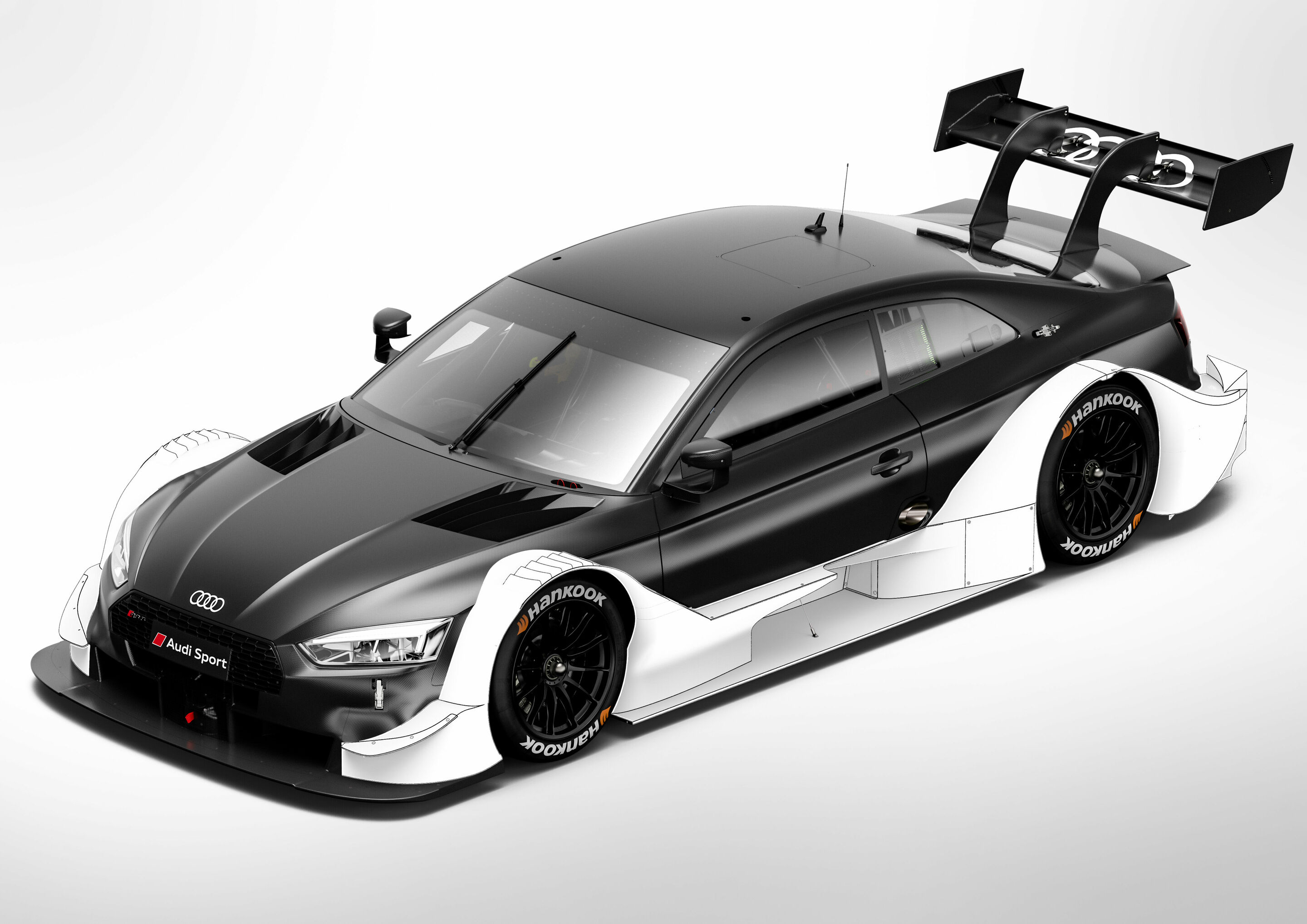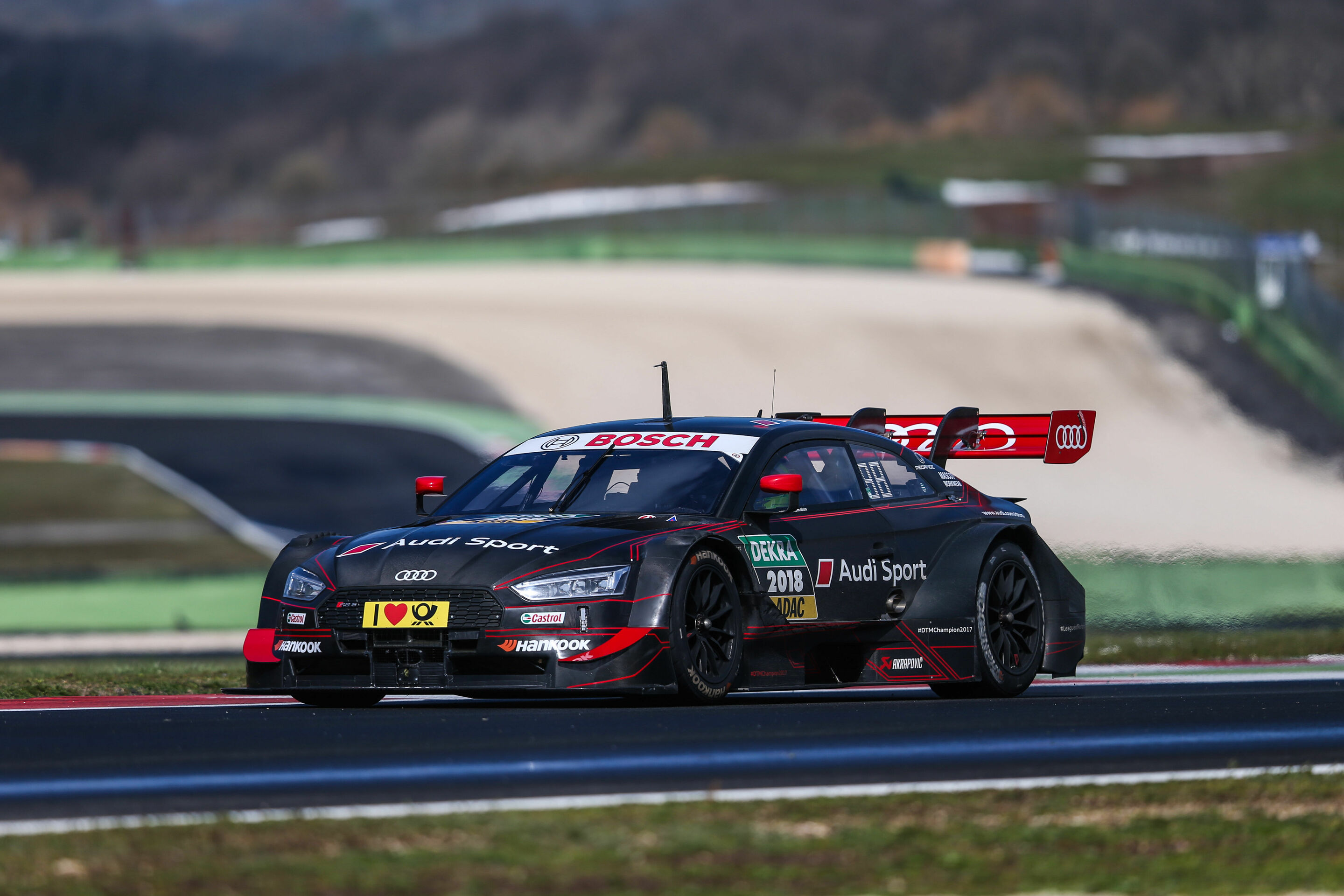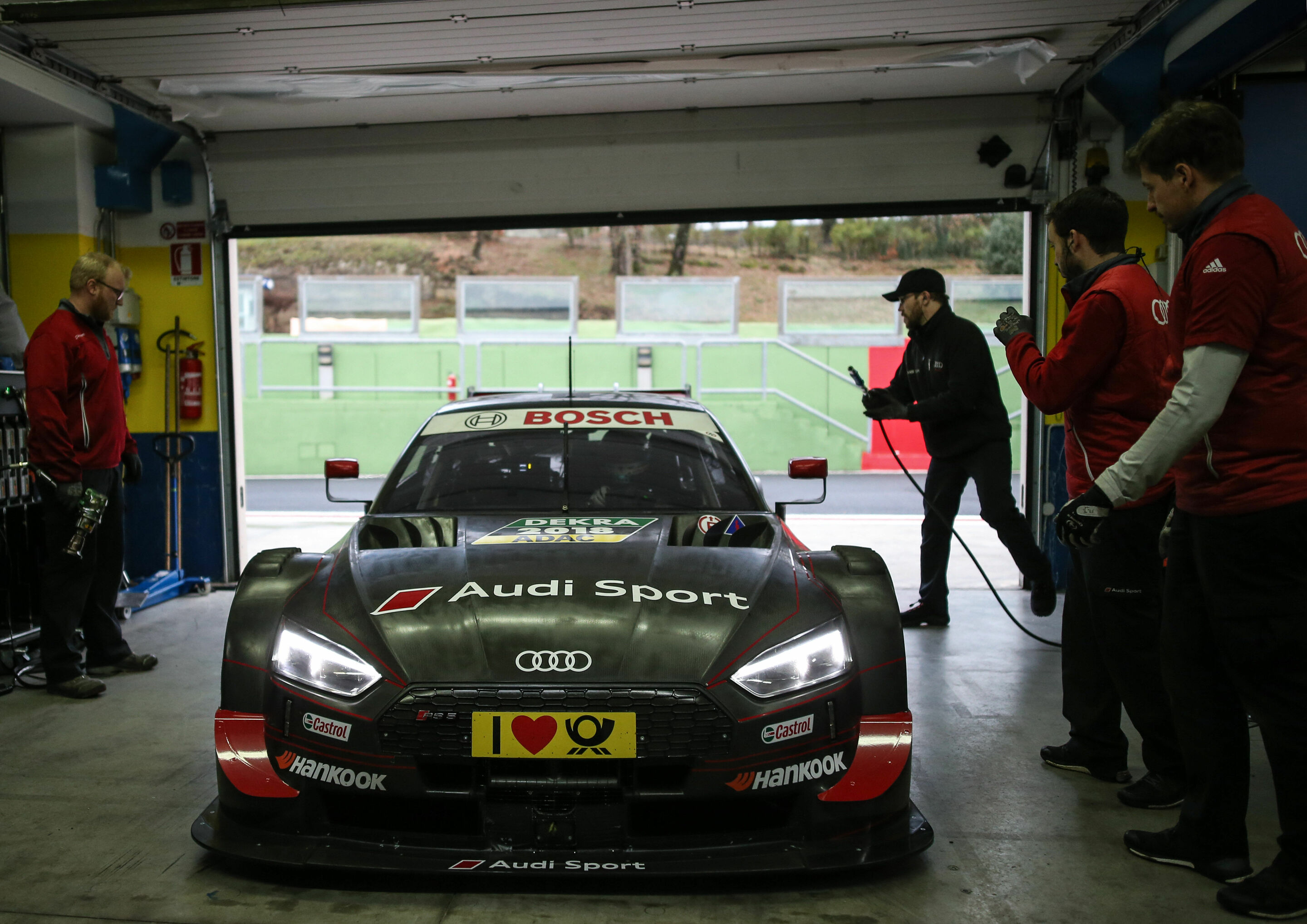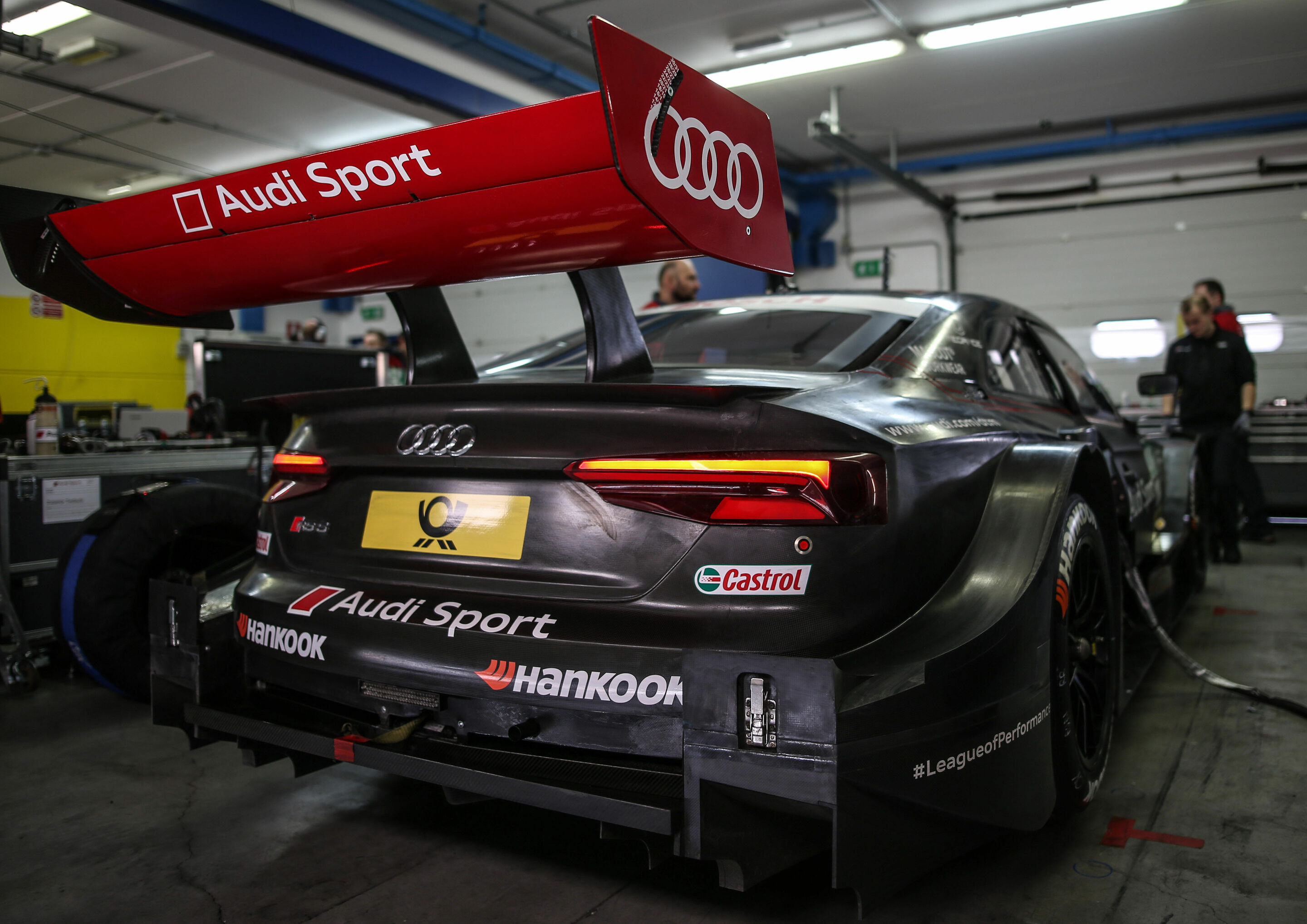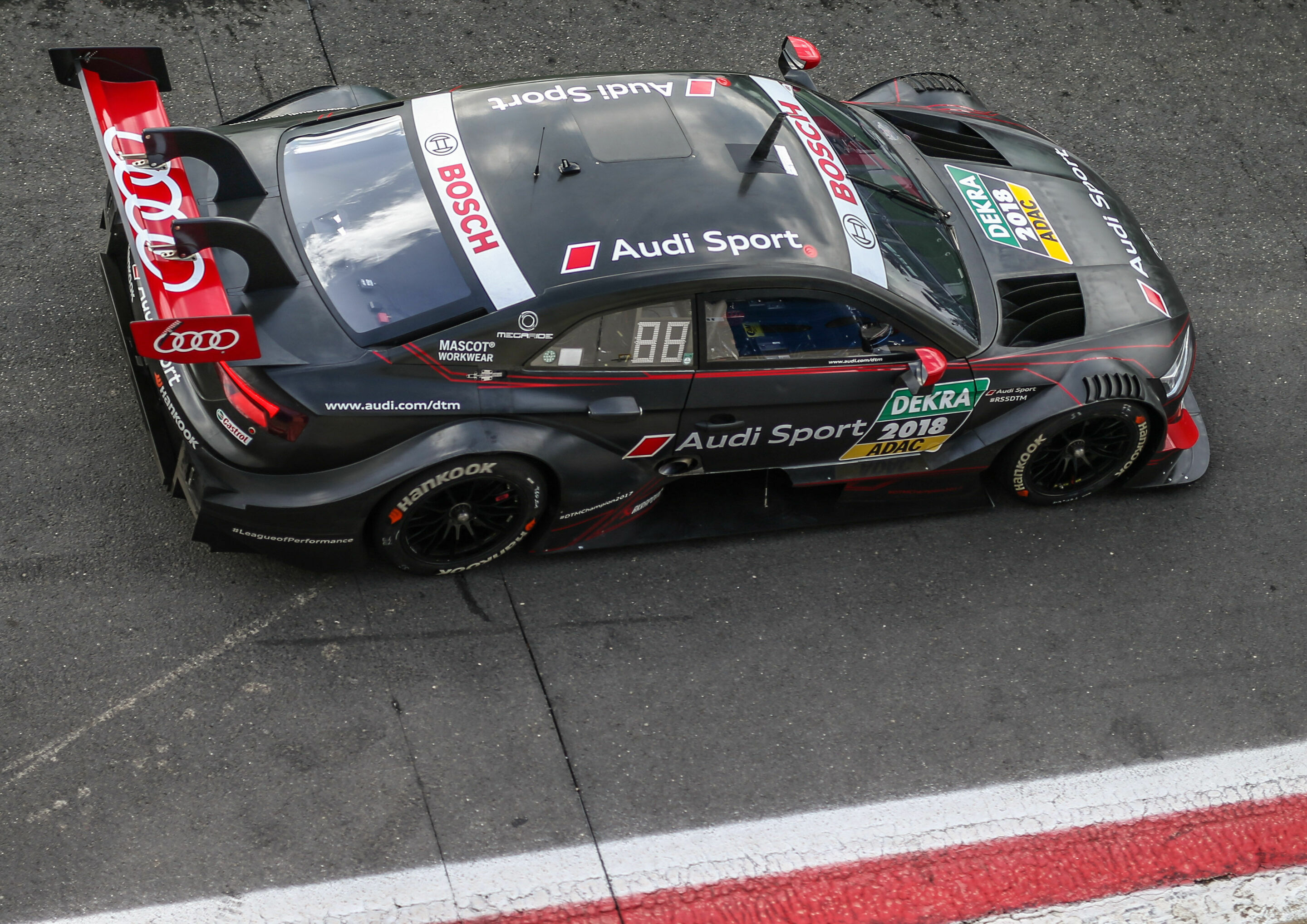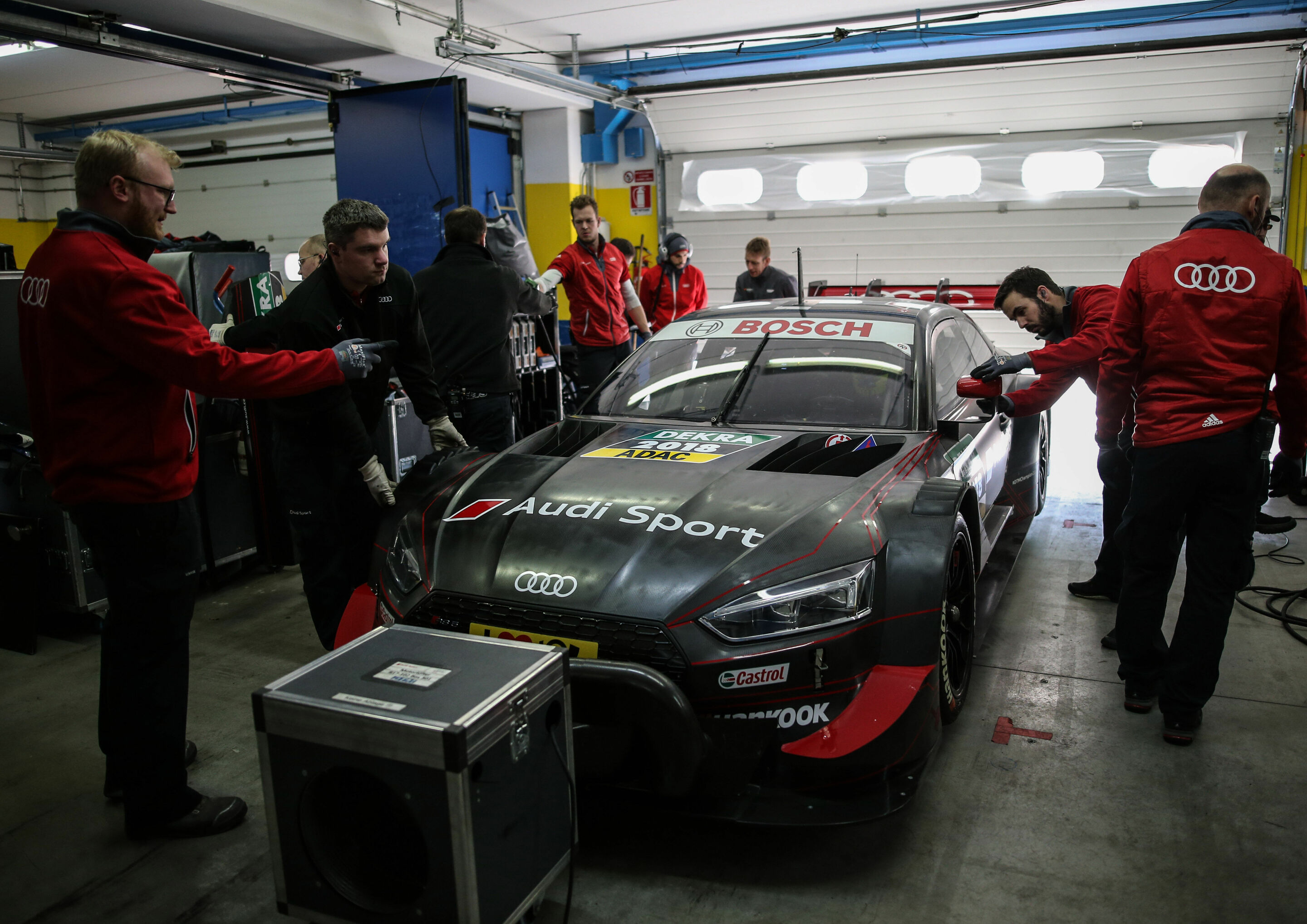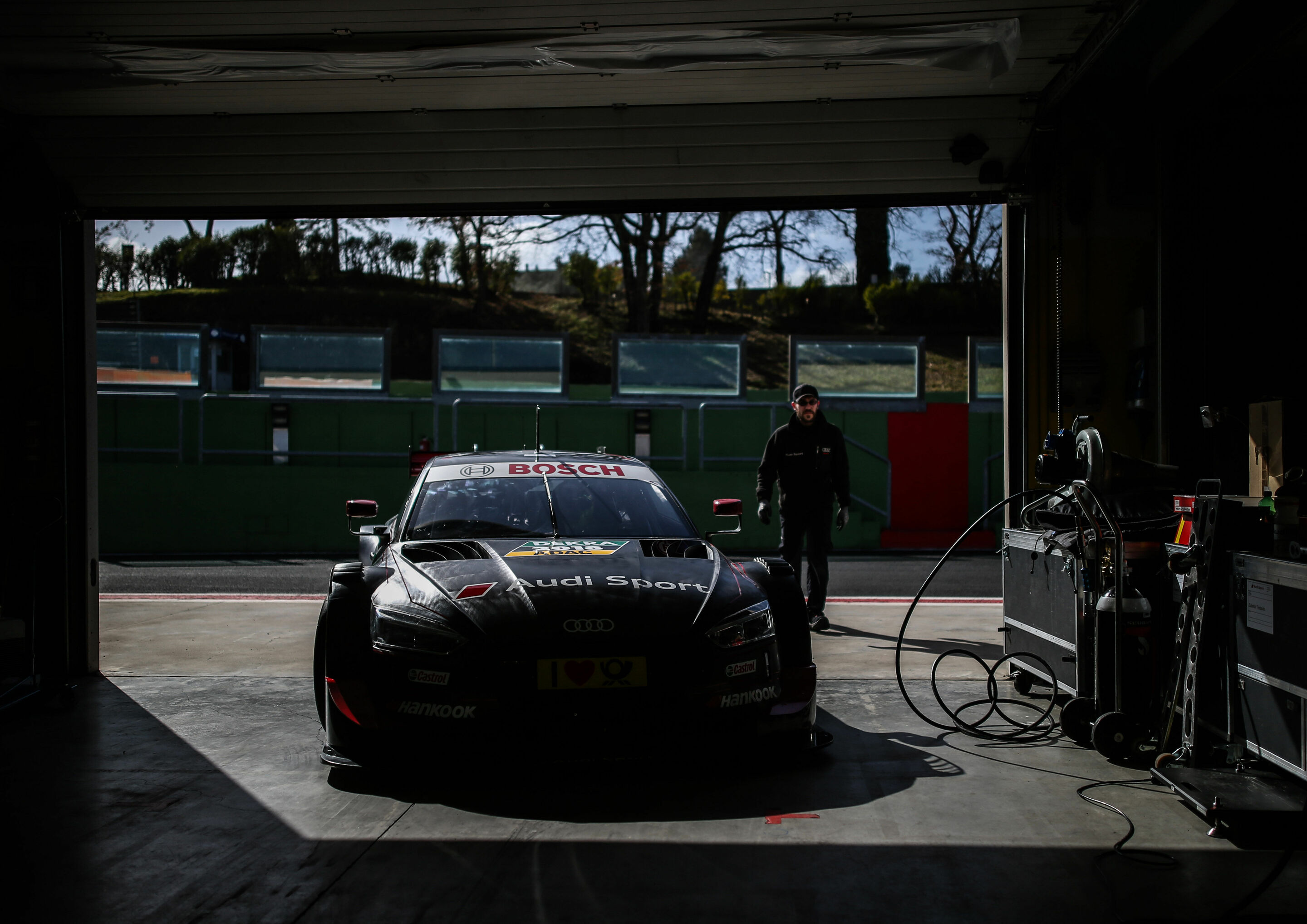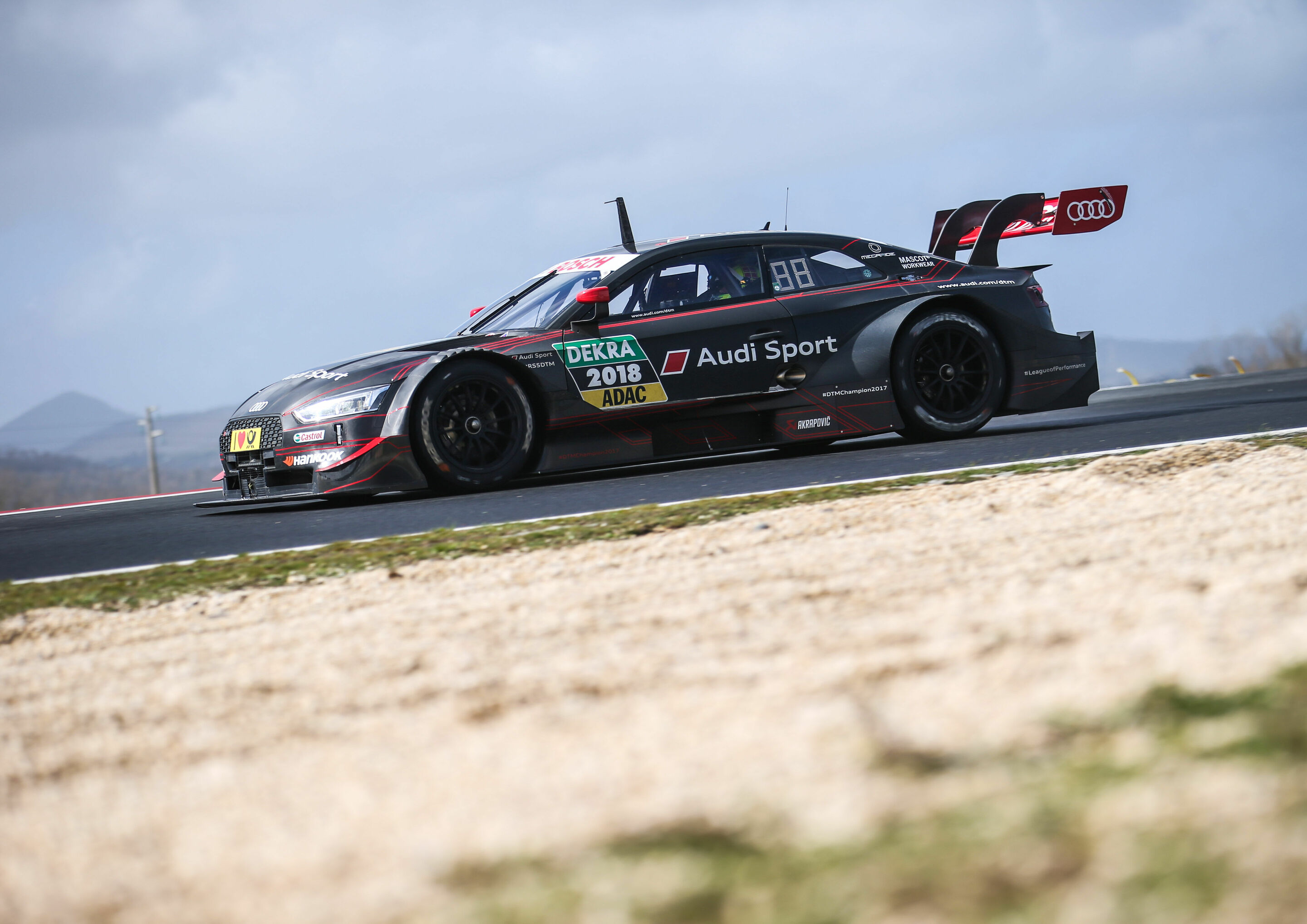Audi RS 5 DTM: Championship-winning car with new aerodynamics
Back to overviewAudi contests the 2018 DTM season with the further developed championship-winning car from last year. Major changes compared to 2017 have particularly been made to the Audi RS 5 DTM’s aerodynamics.
This year, following the abolishment of the performance weights, the drivers in the DTM are taking center stage to an even greater extent than before. Previously, in 2017, more powerful engines and softer tires made for more thrilling races. Now aerodynamic downforce of the DTM race cars with more than 500 horsepower has been reduced by about 25 percent compared to last year and the suspensions have been simplified. Per wheel, the regulations now permit only one spring/damper unit. The so-called “third element,” a connection between the two wheels of an axle, is no longer being used. The objective is to bring the field even closer together than before.
“We are in agreement with DTM CEO Gerhard Berger about the future of the DTM,” says Head of Audi Motorsport Dieter Gass. “We do not want to see a never-ending technological arms race and dominance of a single brand, but thrilling, top-caliber races.” The objective is to make the driver and individual performance of the various teams matter to a greater extent. Gass sees the DTM continuing on the right track in the new season: “The further reduction of downforce and simplified suspension promise an even greater spectacle for the fans.”
Since 2013, at 73 events in the internationally popular touring car series, the Audi RS 5 DTM has clinched 32 victories and 26 pole positions, and posted 42 fastest race laps. In the past three years, Audi won the largest number of DTM races with a strong overall performance.
The scope for development has been reduced in major ways this year as areas of aerodynamics which used to be subject to discretionary design – such as the area around the wheel wells – are now specified for all DTM race cars. “Basically, all cars now have the same aerodynamics package,” says Andreas Roos, the new Project Leader DTM at Audi. “Subject to each manufacturer’s individual design are the transition areas between the aerodynamics components and the bodywork of the respective vehicle.” Intensive aerodynamics development as in the past no longer exists. The reduction of downforce has a major effect on the suspension setup and handling of the tires. Overall, there are fewer adjustment options for the suspension as well so that Audi has to change its previous philosophy.
“We felt the reduced downforce even during the first virtual tests in the simulator,” says DTM Champion René Rast. “The cars are now even more challenging to drive than before. For me, personally, this is great fun and the spectators, too, will enjoy the races that will be more exciting than ever.”
The internal project name of the latest-generation Audi RS 5 DTM is RC7. Except for its new aerodynamics and simplified suspension it is largely identical in construction with the previous RC6 model that was first fielded in the 2017 season. Its four-liter V8 engine delivers more than 500 horsepower transmitted to the rear wheels. The semi-automatic six-speed transmission is operated via paddle shifters in the steering wheel.
Driver assistance systems such as ABS or traction control have traditionally been prohibited in the DTM. Overtaking is assisted by the Drag Reduction System (DRS) known from Formula 1. By pushing a button, the driver is able to flatten the angle of the rear wing, thereby gaining a short-term speed increase of up to 10 km/h, depending on the race track.
Tire partner Hankook has been supplying softer tires since last season. While allowing faster lap times to be achieved on the one hand they are deliberately designed to significantly degrade after a few laps on the other. Perfect tire management was one of Audi’s fortes in 2017 and will become even more important in 2018 due to the further reduction of downforce.
The DTM has been setting standards in terms of safety for many years. In the Audi RS 5 DTM, the drivers sit in a carbon fiber monocoque which is combined with a solid steel cage. CFRP crash elements on the sides, rear and front absorb energy in the event of a crash. The body of the Audi RS 5 DTM consists of carbon fiber.
DTM race cars are prototypes specifically developed for racing which are visually based on the production models – in the case of the RC7 on the current Audi RS 5 Coupé.
